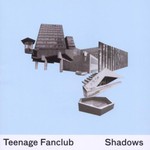Shadows
Studio Album by Teenage Fanclub released in 2010Shadows review
Teenage Fanclub live and work in their own world and in their own time dimension
The British band Teenage Fanclub mesmerized the global music community after they released a magnificent album called Grand Prix, which happened in the mid nineties. The music they presented then is today generally named indie-rock. Since then, the ensemble has trailed a difficult path going through the deep abysses of long lasting silence and lineup changes. Critics and listeners never did doubt their abilities to create a worthy sort of material. Yet it was difficult to resist an impression that ratings, sales and festivals were what bothered the band the least. It seemed that Teenage Fanclub went to the studio and wrote the new material only when they felt the desire to do so; as if that process was the whole meaning of the music, the sweetest pleasure. Promotion was the outfit’s weakest side. Should these guys work harder on it, they would have many more young fans in the new generation. The reality is that from the moment Grand Prix was issued, fifteen years have passed, and inside this period the musicians deigned to produce only three long players. These are Songs From Northern Britain, released in 1997, Man Made, nice record to be delivered eight years after, and, finally, the seventh effort by the British ensemble, Shadows (2010).
Shadows: relaxing album with a special atmosphere
The Shadows album was recorded in between August 2008 and January 2009 in a very picturesque rural area of Norfolk, which was bound to impact the sounding. The list of the songs is opened by the high-spirited Sometimes I Don't Need To Believe In Anything with horns in the background. Then you have a calmer track called Baby Lee with an enchanting, yet so simple acoustic guitar. Dark Clouds, on the contrary, highlights a piano line. The worthiest tracks are crowded in the central part of the record. When I Still Have Thee, in terms of performance, melody and lyrics, matches the highest standards of the band’s music whose largest part was offered from ten to fifteen years before. The last songs are less interesting. But even among them, you can find a very promising piece titled Sweet Days Waiting that features Raymond McGinley’s captivating guitar play. Nonetheless, the musicians should have given a better thought to the order of the tracks to make the album more intriguing. In general, if you do not dwell on separate elements of the record, you have to admit that the musicians of Teenage Fanclub again managed to mould their unique atmosphere, this time, an atmosphere of peaceful and beautiful life far away from the fuss of the huge and noisy contemporary world.
New album, old traditions
Indeed, the Teenage Fanclub members do miss the past and clearly do not intend to follow the trends of the music market that is developing and changing too fast. Some would say that the musicians would be able to make records oftener and sell them better if they put aside their conservative views and strict principles. Yet the British are far more concerned with the questions of purely musical character. So, twenty years from the start of their band’s history, they prove that there still is an ability and desire to move on professionally. They have evolved particularly in regards to their vocal performance. Shadows features them singing as harmonically and impressively as never before. Their skill to attach the listener’s focus to different instruments on different songs makes the band gather in one album various and interesting tracks. As a result, we get one more record that corresponds with all the laws and patterns of the Teenage Club music. After all, there must still be constant values, lasting ideals and solid traditions.

